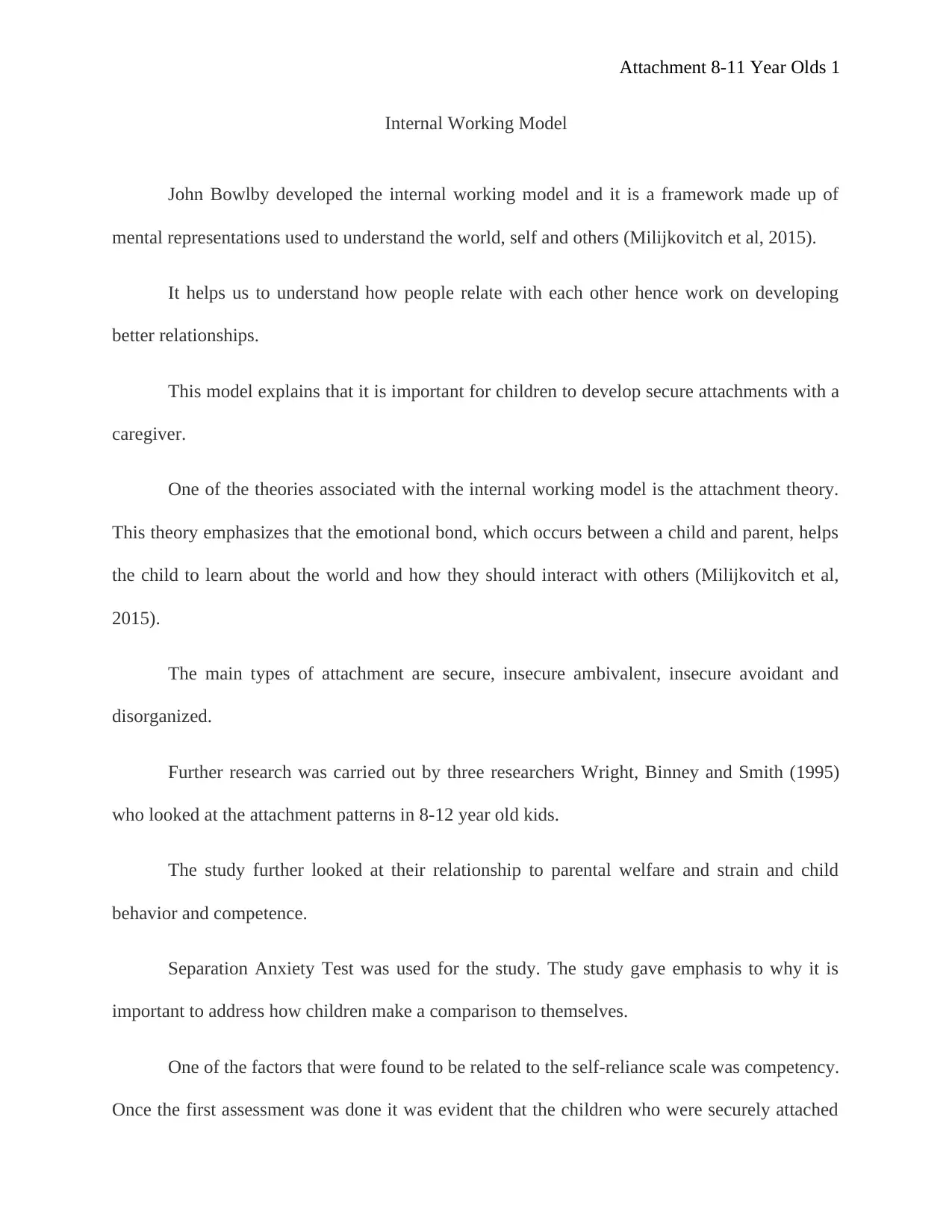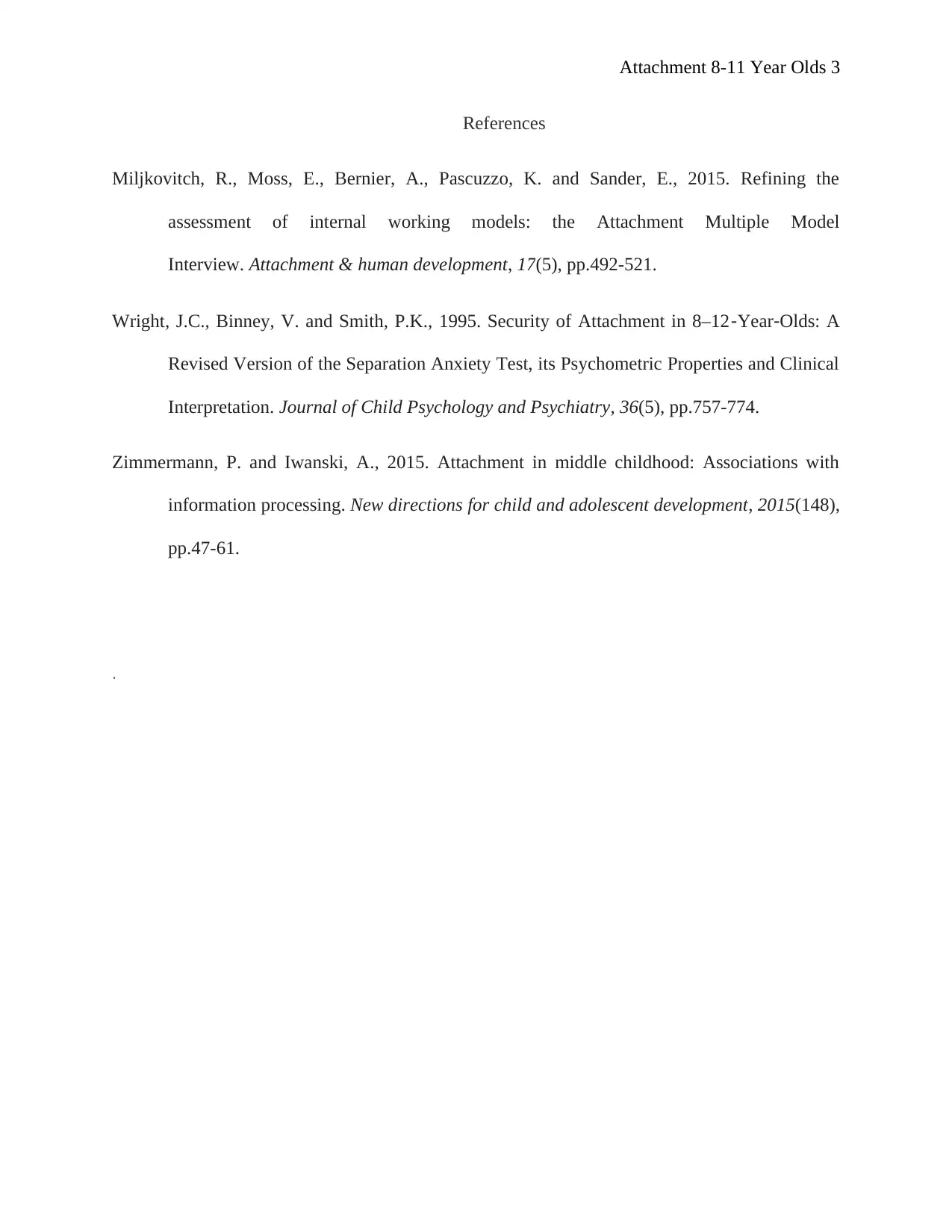Psychology Report: Internal Working Model and Attachment Theory
VerifiedAdded on 2020/04/21
|3
|436
|184
Report
AI Summary
This report delves into the Internal Working Model and Attachment Theory, focusing on children aged 8-11. It explores the work of Bowlby, highlighting the significance of secure attachments and their influence on a child's understanding of the world and relationships. The report examines research by Wright, Binney, and Smith (1995) on attachment patterns, parental welfare, child behavior, and competence using the Separation Anxiety Test. It emphasizes the link between secure attachment and coping mechanisms, alongside the emotional and social development of children in this age group, and discusses the desire for independence from parents and siblings. The report references key studies to support its findings, including the work of Miljkovitch et al. (2015) and Zimmermann and Iwanski (2015), providing a comprehensive overview of the topic.
1 out of 3










![[object Object]](/_next/static/media/star-bottom.7253800d.svg)